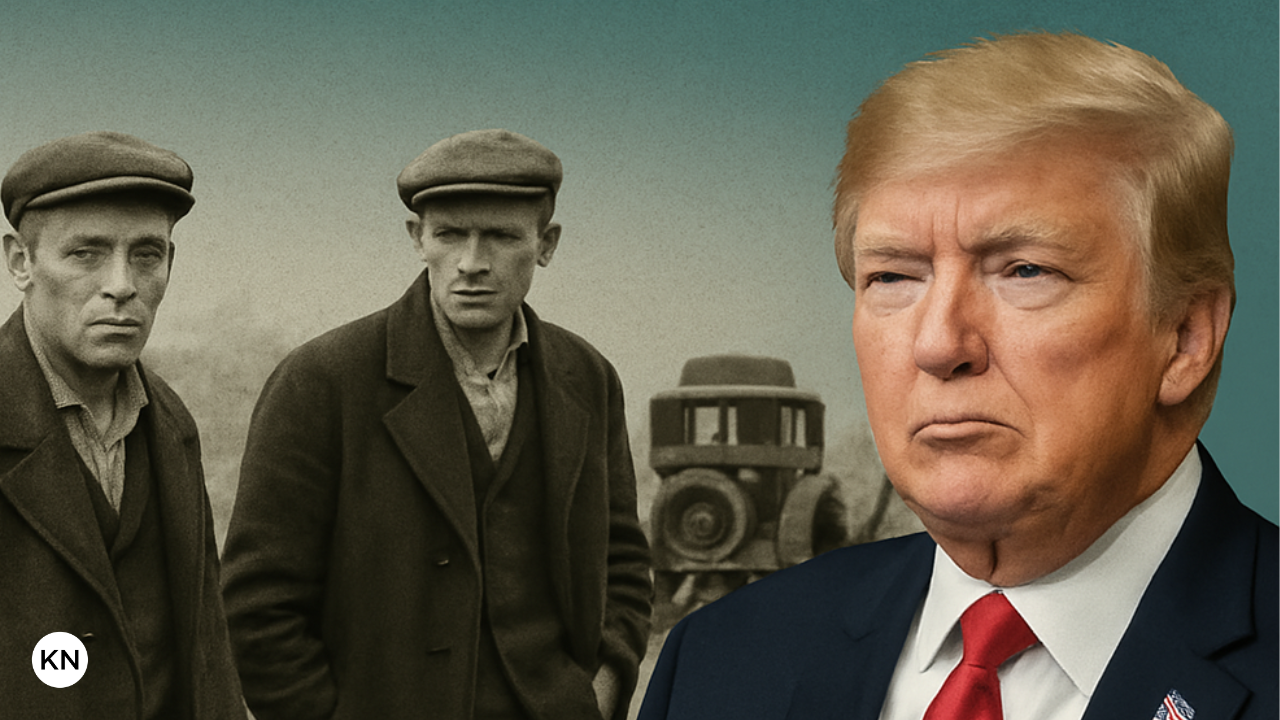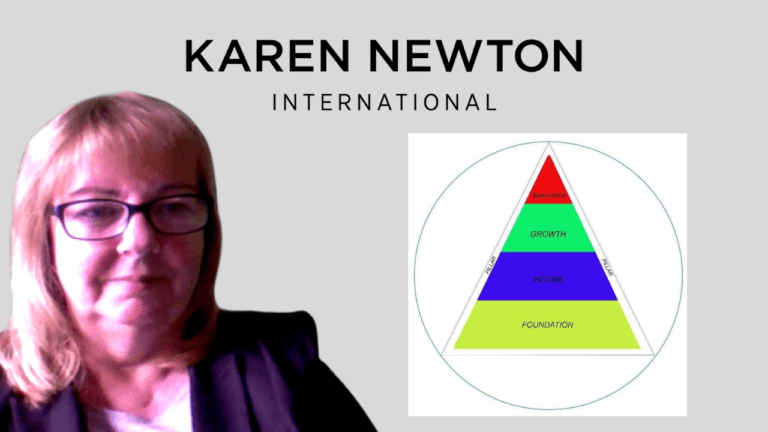Tariff Lessons From History And What It Means For The Future
As the sun rises over windy day here in Spain, a major economic storm may be brewing across the globe. Overnight, President Trump announced sweeping new tariffs on imported goods — a decision that immediately echoed one of the most defining economic mistakes of the 20th century: the Smoot-Hawley Tariff Act of 1930.
Table of Contents
- A History Lesson: The Smoot-Hawley Tariff and the Great Depression
- Fast Forward to 2025: A Tariff Resurgence
- Economic Ripple Effects
- Retaliation or Talks – The Economic Affect on Jobs and Trade
- The Bigger Picture: Then vs. Now
- Strategic Takeaway: What Entrepreneurs & Investors Should Do
- Lessons From History And What It Means For The Future
Understanding the historical consequences of tariffs gives us a crucial lens through which to view today’s bold policy shift — and what it might mean for our economic future.
A History Lesson: The Smoot-Hawley Tariff and the Great Depression
Back in 1930, as the U.S. was beginning to feel the weight of economic downturn, the Smoot-Hawley Tariff Act was introduced to “protect” American farmers and manufacturers by raising tariffs on more than 20,000 imported goods. The intention was simple — make foreign products more expensive so Americans would buy domestic.
But the fallout was far more complex.
Countries retaliated. International trade collapsed. U.S. exports and imports with Europe fell by nearly two-thirds between 1929 and 1932. Rather than insulating the economy, the tariffs deepened the global depression, severely damaging the agricultural sector, triggering waves of bank failures, and ushering in a decade of economic hardship.
The Smoot-Hawley lesson was clear: protectionism can be a dangerous game in an interconnected world.
Fast Forward to 2025: A Tariff Resurgence
On April 2, 2025, President Trump announced a new round of sweeping tariffs in response to what he called a “national emergency” caused by America’s trade deficits. Starting April 5, a 10% baseline tariff will apply to all imports, regardless of origin.
But it doesn’t stop there.
Additional reciprocal tariffs are being introduced based on trade deficits with individual countries. While there were about 60 countries affected some of the headline ones are
- China: 34%
- European Union: 20%
- Japan: 24%
- Vietnam 46%
- Taiwain 32%
- UK 10%
This bold move is meant to give American companies a competitive edge, bring manufacturing home, and curb trade imbalances. Some exemptions apply — including to autos, steel (they were hit with 25% tariffs earlier in the year) pharmaceuticals, and semiconductors — but the overall economic impact could be dramatic.
Economic Ripple Effects
Here’s what economists are warning:
- Inflation Pressure: With tariffs pushing up the cost of imports, prices are likely to rise across the board. Estimates suggest it could cost the average U.S. household an extra $1,350 per year.
- Market Jitters: Stock markets reacted swiftly with volatility and declines, reflecting fears of slowed economic growth and higher costs for businesses.
- Trade Wars Looming: The EU, Canada, and other trade partners have already hinted at retaliatory tariffs. A global trade war — much like the one triggered by Smoot-Hawley — could follow.
Retaliation or Talks – The Economic Affect on Jobs and Trade
President Donald Trump’s recent announcement of new tariffs has prompted significant concern regarding their potential economic impact on the United Kingdom (UK) and the European Union (EU), particularly in terms of costs and employment.
United Kingdom
The UK faces a 10% tariff on its exports to the United States, a rate lower than the 20% imposed on EU countries. Despite this, UK officials have expressed disappointment, acknowledging that these tariffs could adversely affect key industries
- Automotive Sector: The UK car industry is notably impacted, with a 25% tariff on vehicles exported to the U.S. This could lead to decreased demand, potentially resulting in reduced profits and job losses within the sector.
- Steel and Aluminum Industries: These sectors are also subject to a 25% tariff, which may harm exports and threaten employment in related industries.
The UK government is pursuing diplomatic avenues to mitigate these effects, aiming to negotiate a broader trade agreement with the U.S. Officials have indicated a preference for negotiation over immediate retaliatory measures to avoid escalating trade tensions.
European Union
The EU has been subjected to a 20% tariff on its exports to the U.S., prompting significant concern among member states:
- Economic Impact: European Commission President Ursula von der Leyen has warned that these tariffs could have severe consequences for the global economy, potentially leading to increased costs for consumers and businesses that have benefited from transatlantic trade.
- Retaliatory Measures: The EU is preparing countermeasures, including potential tariffs on up to €26 billion ($28.4 billion) of U.S. goods, in response to the U.S. tariffs.
Projections on Costs and Employment
While specific projections are still emerging, economists and industry leaders have expressed concerns about the broader implications:
- Inflationary Pressures: The tariffs are expected to increase the cost of imported goods, potentially leading to higher prices for consumers in both the U.S. and affected countries.
- Employment Risks: Industries facing higher tariffs may experience reduced export demand, which could lead to job losses, particularly in sectors like automotive and manufacturing that are heavily reliant on international trade.
The newly imposed tariffs by the U.S. are anticipated to have significant economic repercussions for both the UK and the EU, with potential increases in costs for consumers and risks to employment in key industries.
Both regions are actively seeking strategies to address and mitigate these impacts through diplomatic and economic measures.
The Bigger Picture: Then vs. Now
So what makes today’s situation different — and what remains the same?
What’s Different:
- The global economy is far more interconnected than in the 1930s.
- Technology and logistics have created highly complex global supply chains.
- Modern economies are service-oriented, reducing direct exposure in some sectors.
What’s the Same:
- Retaliation remains a risk.
- Tariffs still act as a hidden tax on consumers and businesses.
- Trade wars can escalate rapidly, hurting growth and stability.
Strategic Takeaway: What Entrepreneurs & Investors Should Do
If history has taught us anything, it’s that economic protectionism, no matter how well-intentioned, can have unintended consequences. As smart entrepreneurs and investors, we need to:
- Monitor Global Reactions Closely – The response from Europe and China will set the tone for global trade in the months to come.
- Diversify Markets and Supply Chains – Businesses that rely on imports or exports should consider diversifying sources and markets now.
- Look for Inflation-Proof Investments – Dividend stocks, precious metals, and strategic assets may perform better in inflationary times.
- Stay Nimble – The economic landscape may shift rapidly. Flexibility and fast decision-making are vital.
- Online Business – opportunities to grow online digital businesses
Lessons From History And What It Means For The Future
Tariffs may be making a comeback, but the risks are as real now as they were nearly a century ago. The Smoot-Hawley Tariff taught us how quickly good intentions can spiral into economic disaster. As the world watches Trump’s bold new strategy unfold, we would do well to remember the lessons of the past.
Because sometimes, the best way to prepare for the future… is to look back.

Karen Newton is a Business and Wealth Strategist, 3x International Bestselling Author, and founder of Karen Newton International. She combines practical experience with AI-Powered Entrepreneurship to help smart entrepreneurs build online income, invest strategically, and create long-term wealth through business growth, investments and joint ventures.






